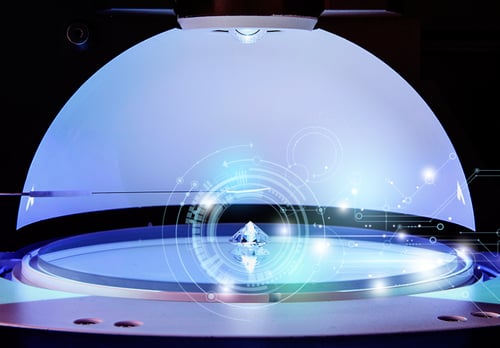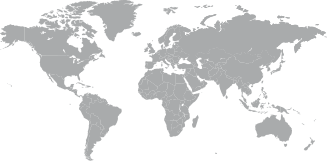Brought to You by New Jeweler Magazine: Exclusive Interview With Sarine CEO, Mr. David Block.
The post-covid era is certainly changing the existing dimensions in the diamond sector with Diamond exchanges coming up in Angola and Surat-India, the Saurimo Diamond Hub in Angola, Dubai Diamond Exchange breaking records, and strategically tying up with economies such as Israel for growth. In light of all this, how do you view the role of technology, and what would be that cutting-edge tech tool that would transform the fundamentals of the sector?
Technology is continuously evolving, bringing new opportunities to different segments along the diamond pipeline. Over the last three decades, the manufacturing segment has embraced Sarine's technologies, which are today an integral part of diamond manufacturing (midstream). The use of technology at the two ends of the pipeline (retail and producers) has also been growing rapidly in the past few years, but I believe the biggest challenge is actually how the industry integrates different technologies in order to create efficiencies across the entire pipeline, rather than just at specific points along the pipeline. It is no longer a secret that such value and efficiencies can be created through the intelligent use and analysis of data generated by the technologies in use in the pipeline. A good example of this is the use of already existing data created in the midstream of the pipeline to enable traceability of the diamond. The data is not new and is already being used for other purposes, but the ability to analyze and apply the data in a different way provided an efficient scalable solution for the much needed traceability. Today the diamond pipeline is fairly inefficient with nearly two years of stock and a fair amount of ‘dead’ stock, meaning goods that were manufactured and are currently not in demand create a burden on different players in the industry that need to hold these goods. Now imagine the scenario where the manufacturing segment knows what the retailers need (what is currently selling at retail) thereby enabling manufacturers to adjust their manufacturing in near real-time to actual demand rather than broad estimates, which leads to under or oversupply of certain goods. Looking at it from a retailer perspective, if they know what goods are currently being manufactured and will be available in the near future they can better plan their sourcing. This fairly simple use-case creates a win-win for both the supply and demand side. I am optimistic that this currently ‘imaginary’ scenario will materialize on a wide scale in the future, but it will require different players within the industry to cooperate and work together to create more value for the industry as a whole rather than simply trying to optimize specific segments.

You have Introduced the First-ever Rough Diamond Report with Valuation Appraisal. How important is this for the Diamond Industry and its growth? Tell us more about the partnership with MAZALIT and why MAZALIT?
Rough diamonds are high valued assets, yet there is very little understanding outside our industry on how to value them. Therefore financing them until now has been difficult due to the highly subjective and manual process involved, and the consequential difficulty, of accurately assessing their value. Our technologies today enable us to create a wealth of information about rough diamonds, and when used in conjunction with additional data available for polished diamond pricing it is possible to objectively and accurately value rough diamonds. This is important for both financing and insuring rough diamonds, which is what led us to develop a service for the industry based on data rather than subjective observations. A natural partner to roll out this new capability was Mazalit, a regulated financial entity that provides working capital to clients against rough diamonds as collateral. Mazalit enables its customers to expand their business by offering them supportive logistical services and beneficial financing – allowing their stock “to work” for them despite strict constraints dictated by the Israeli authorities. The cooperation will enable Mazalit to scale up its financing abilities, while simultaneously reducing its risks, thereby creating a win-win-win between Sarine, Mazalit, and our mutual clients.
Tell us about Sarine Advisor 8.0? What could be the major human errors that can be avoided with Advisor 8.0?
With the recent release of Advisor® 8.0 software, we continue to provide the industry with the most advanced software and technology for diamond planning - the industry’s de-facto standard. Having witnessed over the past few years an increasing trend of applying technology to smaller-sized rough diamonds, we decided to focus in this version on an improved value proposition for this huge segment of very small stones, where an estimated 900 million stones are polished annually. Advisor® 8.0 introduces a wide range of features specifically designed to benefit polishers of smaller-sized rough diamonds, while not forgetting the larger-sized diamonds, where even small improvements can mean significant additional profit. For the smaller rough the software focuses a lot on improved productivity and automation, including enabling ‘offline’ (off-hours / off shift) operation, overnight autonomous processing, automatic recovery from system failures, and shorter cycles. For the larger size diamonds, we have focused on adding value through more advanced algorithms that enable better planning and execution of the planned results. Enhanced asymmetrical planning, planning according to optimal light performance, 21 new fancy shapes for planning as well as the new ‘triplet’ auto planning for planning three optimal polished diamonds are just some of the advanced features in Advisor 8.0 that add significant value to the planning and manufacturing process. In order to help execute the plan and reduce transfer errors during the manufacturing, features such as marking the direction for sawing as well as capabilities that detect areas that need to be avoided during polishing were implemented. There is no doubt that this is our most advanced rough planning software, bringing capabilities that provide significant added value to both small lesser-valued goods as well as the largest and most expensive diamonds manufactured worldwide.

SARINE Diamond Journey Traceability program has now been adopted by the BONAS Group. What is the significance of this and also elaborate on the "Sarine Diamond Journey Traceability Program" in comparison with the "Diamond Origin Reports" program adopted by other entities in the Diamond servicing sector?
Many producers and tender houses from around the world are recognizing the essential role that traceability is playing in the diamond industry and are becoming part of Sarine's traceability ecosystem. It is becoming clear that "origin" reports are only the first step of traceability that really spans from the mine all the way to the consumer. What about the manufacturing process where the diamond transitions from rough to polish? If we want to claim that diamonds are sustainably sourced, we need to look at the entire pipeline and not just the origin. The Sarine Diamond Journey™ report offers a number of advantages as compared to other solutions. Most important is that we provide an unmatched level of confidence, based on verifiable data received directly from thousands of Sarine systems in use along the diamond pipeline. Unlike many of the other solutions, which are based on declarations that can be incorrect or even maliciously manipulated, Sarine systems at the producers or suppliers' facilities, capture the diamond's data every step of the way, enabling tracking of the diamond as it moves down the diamond pipeline from the mine to the consumer. Another important advantage of our solution is that is it based essentially on our existing infrastructure in the midstream, which processes over 100 million diamonds annually. This means that there is little additional overhead in order to adopt our solution, which is critical to enable widespread use and offers a cost-effective option for the industry to scale up the use of traceability. The recent joining of Bonas to the expanding group of producers and rough suppliers will enable several additional rough producers (represented by Bonas) to effortlessly join the Sarine Diamond Journey™ ecosystem.
SARINE boasts the most advanced AI-based fully automated grading system. Would you like to talk about the advantages of this and how it will positively impact the Industry?
Diamond grading is an important part of the diamond pipeline but it hasn’t changed much in the past 20 years. We have got used to the fact that diamond grading can cost nearly as much as the entire manufacturing process and many times takes just as long. As crazy as this may sound it is due to the fact that grading has remained a manual process, which is not only slow and costly but also inconsistent. Therefore it was only natural for us to develop an alternative based on our advanced vision technologies and new AI technology, which we believe will replace manual diamond grading in a few years. Almost five years ago, we announced the first generation of diamond grading technology for automated Color and Clarity grading, and since then we have constantly been refining the core grading technologies. We are now ready to take the next revolutionary step which we call e-Grading™. This new approach to diamond grading will enable our clients to grade diamonds using cutting-edge technology in-house, without the need to send them to a grading lab, and without compromising in any way on quality. It may seem like a small change but it has a huge impact by dramatically reducing the grading cycle time to a few days, while also reducing significantly the direct cost of the report as well as eliminating additional indirect costs such as shipping, insurance, financing costs (due to the long offsite grading cycle), etc. All this while at the same time increasing the accuracy and consistency of the grading, due to the use of advanced technologies as opposed to manual processes. We started 2022 with High Jewelry Maison Boucheron (from the Kering group) being the first high-end brand to adopt Sarine AI-based 4C's diamond grading, combined with our industry-leading Sarine Diamond Journey™ traceability report. Sarine’s AI technology-based grading will positively impact both the manufacturers and the retailers, by making diamond grading faster, cheaper, more accurate, and consistent, with the added benefit of being fully digital, which is exactly what today’s consumer is looking for.
.jpg?width=500&name=2021%20blog%20Diamond%20Journey%20Traceability%202%20(2).jpg)
Tell us about the expansion plans of the Company in the Southern African region, including Angola, as well as the Middle East, especially Dubai?
Due to local beneficiation programs, the diamond industry landscape is changing with increasing activity in the producing countries in Africa. As governments are looking to increase the benefits derived from the produced diamonds on the local economies, I believe we will see this trend continuing and even intensifying. Over the past decade, we have built a strong infrastructure to support our clients in the African region and are continuing to do so in developing geographies, such as Angola. Just recently I participated in the Angola International Diamond Conference in Saurimo, discussing how technology is playing a significant role not only for manufacturers but also for diamond producers. Over the past few years, Dubai has grown to be the world’s largest rough trading center and an important hub for diamond trading. We believe that the central location, excellent infrastructure, and supportive business environment will cement Dubai’s position as a diamond trading hub potentially not limited only to rough diamonds. Just one month after the signing of the Abraham Accords in 2020, Sarine was one of the first Israeli companies to sign a cooperation agreement in Dubai to operate a Galaxy® service center and we have been successfully providing services to support Digital Tenders being held in Dubai.
Lastly, how do you look at the growth of the Lab-grown Diamond sector? Tell us about Sarine's plan to further invest or introduce tech tools for this sector?
The Lab-grown diamond sector today is an integral part of the diamond industry and in my mind, there is no doubt that it will continue to grow in the coming years. As long as there is a clear differentiation between lab-grown and natural diamonds I believe that these two categories can live very well side by side. With the closure of Argyle and no significant diamond mines coming online in the near future, I believe lab-grown stones will fill the void created by the reduced supply of natural diamonds, especially in the lower price ranges. The growing acceptance of LGD diamonds has created a new opportunity for the Group. Virtually all our technologies are applicable to LGD. This year we will introduce a Galaxy® inclusion mapping service specifically adapted to LGD price points. Our Quazer® 3 laser system is already the most cost-effective offering for processing of LGD and is widely used by many of the major growers and manufacturers. Our new retail services such as the Sarine Diamond Journey™ are also applicable to LGD, as they can document their responsible manufacturing and tell their story to that segment of the consumer market. Lastly, our AI-based e-Grading™ is especially applicable to LGD grading, as it will allow grading of the polished LGD at an affordable cost, as opposed to the fees typically charged today for grading services.

%20(2).png)


-1.jpg?width=310&name=blog_image%20(003)-1.jpg)





